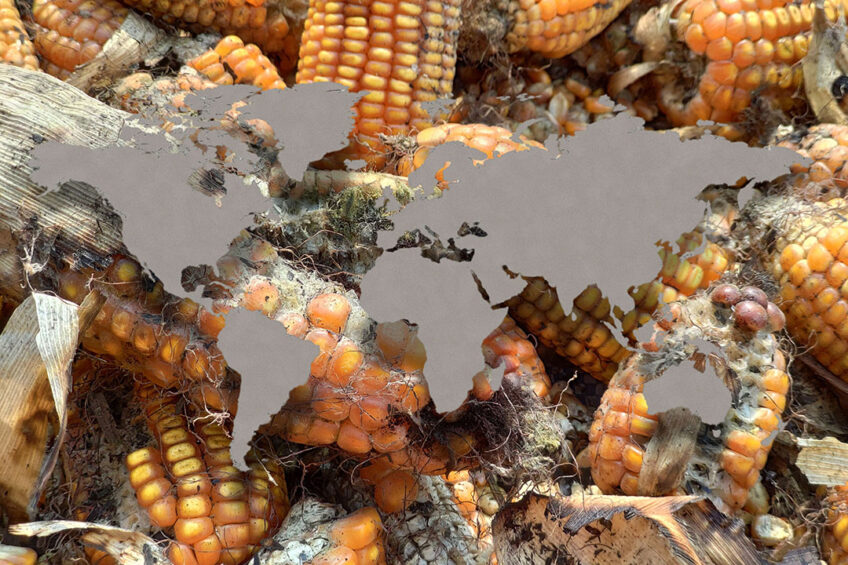Persistent mycotoxin threat across many regions during first quarter

Fusarium mycotoxins across parts of the Far East and North and Central America were most frequently found during the first quarter of this year.
Analysis of nearly 5,400 samples from 64 countries by dsm-firmenich found the fusarium mycotoxins deoxynivalenol (DON), zearalenone (ZEN) and fumonisins (FUM) were most prevalent in North and Central America, South Asia, South East Asia, China and Taiwan. For example, in North America samples showed prevalence of ZEN within 82% of samples, DON 75% and FUM 58%. In China/Taiwan the figures were 95% FUM and DON and 79% ZEN.
The total risk level, based on samples above the risk thresholds, were highest in China/Taiwan (95%), North America (82%), Central America (80%), South Asia (80%) and South East Asia (76%).
Co-contamination levels showed nearly 70% of samples tested positive for more than one mycotoxin, while no detected levels were found in just 13% of samples.
Impact of mycotoxins on animal & fish species
Looking at the effect of mycotoxins on animal and fish species, the study found that prevalence and concentration of DON were extremely high in feed for all species (poultry, swine, ruminant, fish and shellfish) in North America an also extremely high for all but ruminants in sub-Saharan Africa. Contamination levels of Afla were also extremely high in Asia for swine and cattle.
Commenting on the results, Ursula Hofstetter, Head of Mycotoxin Risk Management at dsm-firmenich, said the findings reinforced the critical need for effective mycotoxin management strategies.
The presence of mycotoxins remains a threat to animal health, with adverse effects impacting reproduction, digestive disorders and performance. These latest findings underscore the ongoing global challenge mycotoxins pose to animal welfare and farm productivity
Ursula Hofstetter, Head of Mycotoxin Risk Management at dsm-firmenich
Dsm-firmenich says its Spectrum 380 product has found an average number of 50 mycotoxins and metabolites per sample in its 330 samples from 23 countries. 9.9 out of 10 samples were contaminated with Fusarium toxins and 99% contained 10 of more mycotoxins and metabolites. Of these, Tryptophol, Aurofusarin and Moniliformin had the highest prevalence – of 80% or more.











